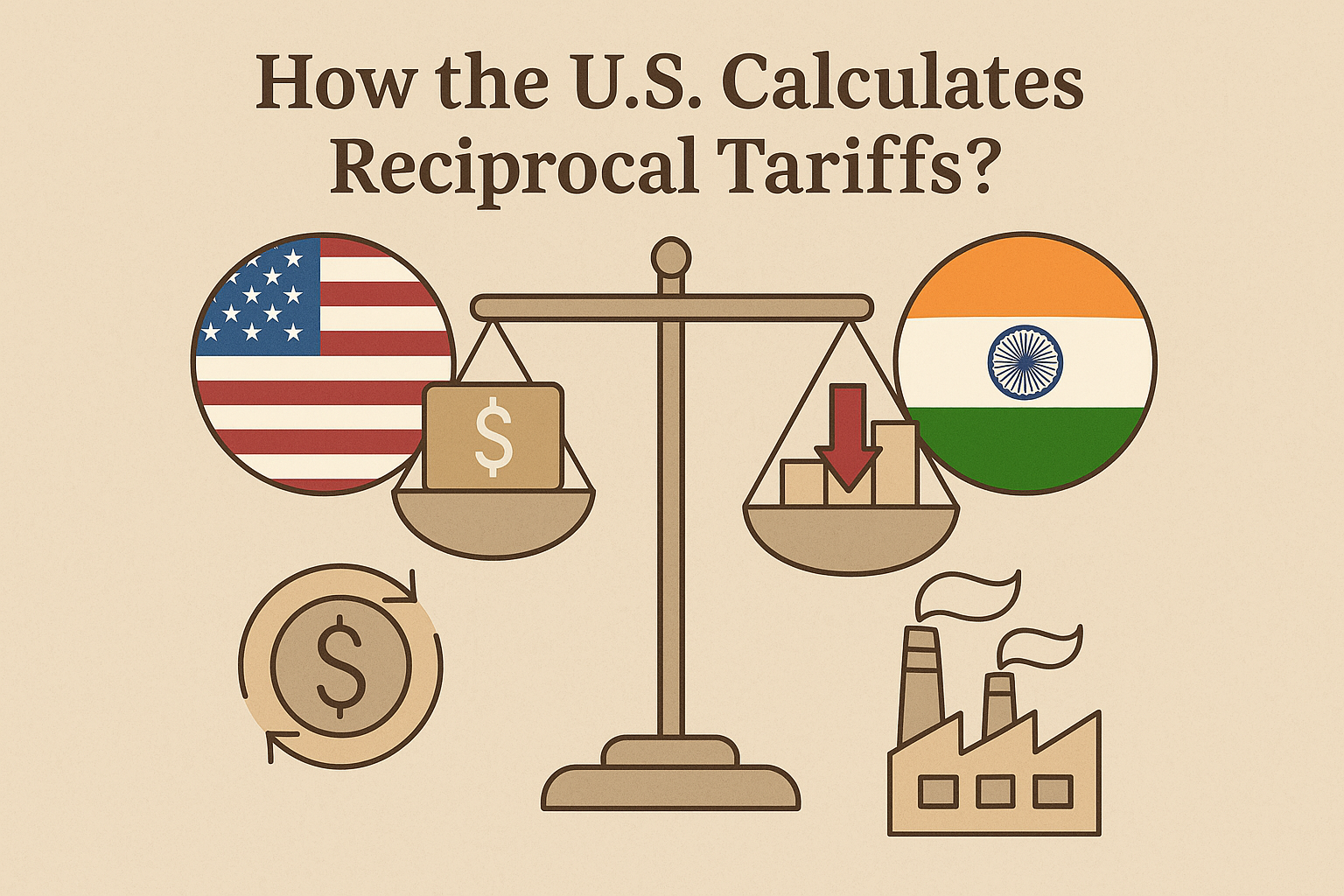How the US Calculated Reciprocal Tariffs – And Why It’s Not What Trump Promised

When former US President Donald Trump popularized the idea of “reciprocal tariffs,” it sounded straightforward: “If you charge us 20%, we’ll charge you 20% too.” But the way the US actually calculated these tariffs is far more complex — and controversial.
In this blog, we’ll break down what reciprocal tariffs were supposed to be, what they actually are, and why economists and trade experts are raising red flags about the current methodology.
📦 What Were Reciprocal Tariffs Supposed to Be?
Trump’s initial pitch was simple:
“If Country A imposes a 25% tariff on American cars, we should do the same to their cars coming into the US.”
This idea resonated with many voters — especially those in manufacturing sectors hit hard by outsourcing. On the surface, it looked like a matter of fair play. But that’s not the logic the US Trade Representative (USTR) used when it finally rolled out these tariffs.
📉 The Real Formula: Wiping Out Trade Deficits
Instead of mirroring other countries’ tariff rates, the USTR memo revealed a different approach:
“Reciprocal tariffs are calculated as the tariff rate necessary to balance bilateral trade deficits between the US and each of our trading partners.”
In plain English? The US set tariffs high enough to wipe out trade deficits — not to match other countries’ rates.
🇮🇳 Example: India’s $46 Billion Trade Surplus
India, for instance, has a trade surplus of around $46 billion with the US. Based on the USTR’s logic, a 27% tariff was applied to Indian goods because that’s the rate the US believes would reduce Indian exports significantly — thereby eliminating the deficit.
This is not about matching India’s tariffs on US goods. It’s about using tariffs as a weapon to force trade balances into zero territory, regardless of the ground realities.
🧠 What’s Wrong with This Approach?
There are several reasons why this method has raised eyebrows:
1. Tariffs Alone Don’t Drive Trade Deficits
Trade deficits exist for complex economic reasons — not just because one country has higher tariffs. Demand patterns, production capabilities, resource availability, and even culture play a role.
A rice-eating country won’t import wheat, even if it’s duty-free.
A country like India might run a trade surplus with the US simply because it exports products the US needs (like generic medicines or textiles) and imports less of what the US produces.
2. Not All Trade Deficits Are “Unfair”
Trade deficits are not inherently negative. For example, the US runs trade deficits with Germany and Japan, but those relationships are based on consumer demand and specialized goods, not unfair trade practices.
Trying to force every bilateral relationship to be “equal” is like trying to balance every friendship by keeping score. It just doesn’t work in a complex, interdependent global economy.
3. The Goalposts Can Keep Moving
If the core goal is to eliminate trade deficits — and if that goal isn’t achieved — the US might keep raising tariffs again and again.
Imagine the dollar strengthens against the rupee — US consumers won’t feel the pinch of tariffs. Indian exports will continue, and the US will still have a deficit.
The result? Even higher tariffs.
This makes the current reciprocal tariffs unstable and unpredictable, which is terrible for exporters, importers, and global business confidence.
4. It Risks Trade Retaliation and Isolation
The problem with weaponizing tariffs is that other countries don’t sit quietly. The EU, China, and India all have the ability to retaliate — and have done so in the past.
A full-on tariff war can disrupt supply chains, raise prices for American consumers, and reduce global trade flows — a net negative for everyone involved.
📊 The Bigger Picture: America’s Manufacturing Decline
The USTR memo also referenced the loss of over 90,000 American factories since 1997 and a manufacturing workforce decline of 6.6 million jobs. These are valid concerns — but tariffs alone can’t solve them.
The shift in manufacturing was also driven by:
- Automation and AI
- Global labor cost differences
- Corporate tax optimization
- Shifts in consumer behavior
Tariffs may provide short-term relief, but without policy innovation, investment in reskilling, and infrastructure, they’re a blunt instrument for a complex problem.
🧩 Conclusion: Reciprocal in Name, Not in Spirit
The way the US calculates “reciprocal tariffs” today is not about fairness, but about forcefully balancing trade books — a flawed approach in a world where economies are intricately linked.
Trade policy should be strategic, consistent, and collaborative — not reactive or punitive.
Fair trade ≠ balanced trade.
And as history has shown us, protectionism often ends up hurting those it claims to protect.
🧠 Key Takeaways
✅ Trump’s idea of reciprocal tariffs = match other country’s tariff rate
❌ Reality = raise tariffs until trade deficit disappears
⚠️ Problem = this approach ignores economic logic, demand, and global supply chains
📉 Risk = unpredictable trade policy and potential global retaliation




